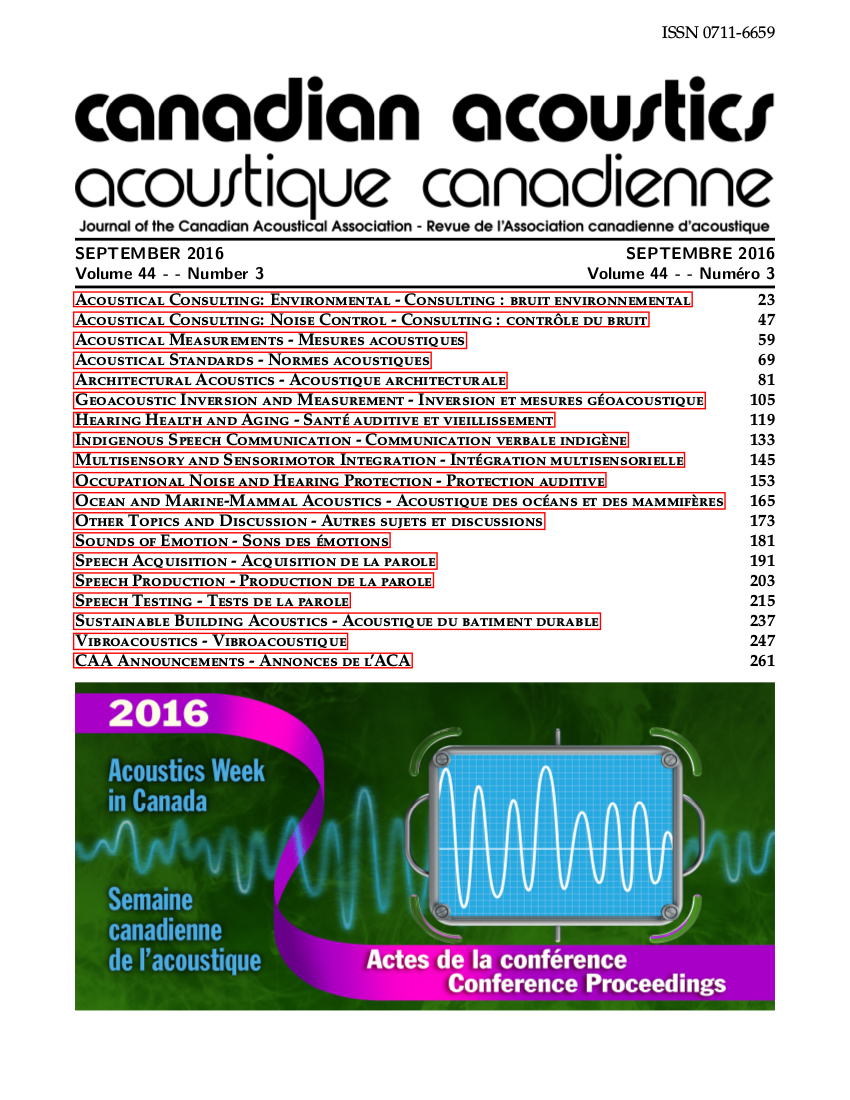Modular Expansion Joint Noise in B.C.
Abstract
ABSTRACT
The passage of a vehicle over a Modular Expansion Joint (MEJ) is known to generate noise. On August 23-26, 2009, emissions from two MEJ’s were investigated in the Province of British Columbia, Canada. MEJ emissions were monitored at wayside with the passage of general traffic, for a range of longitudinal offset positions. MEJ widths were 1.2 and 2.6 m. Variations in the character of tire/joint interaction noise were subjectively observed for several vehicle classes, weights, speeds, tire widths and tire types. For general traffic with an average speed of 100 kph, it was found that the dominant MEJ emission frequency was centered at the 630 Hz one-third octave band in 73% of cases. On March 3-4, 2010, three vehicles were used to conduct controlled tests and the relationship between the character of MEJ emissions and speed was explored for speeds of 90 to 100 kph. It was found that the dominant frequency was 630 Hz in 69% of the trials independent of speed. For the heaviest vehicles, MEJ emission levels were up to 8.7 dB higher. MEJ emissions were found to exhibit a directional variation of Lmax 8.6 dBA at a range of 100 m.
Keywords: Modular Expansion Joint, Tire, Joint, Noise, Emission, Monitoring, Controlled Vehicle Test, Using Instrumentation in Innovative Ways
Additional Files
Published
How to Cite
Issue
Section
License
Author Licensing Addendum
This Licensing Addendum ("Addendum") is entered into between the undersigned Author(s) and Canadian Acoustics journal published by the Canadian Acoustical Association (hereinafter referred to as the "Publisher"). The Author(s) and the Publisher agree as follows:
-
Retained Rights: The Author(s) retain(s) the following rights:
- The right to reproduce, distribute, and publicly display the Work on the Author's personal website or the website of the Author's institution.
- The right to use the Work in the Author's teaching activities and presentations.
- The right to include the Work in a compilation for the Author's personal use, not for sale.
-
Grant of License: The Author(s) grant(s) to the Publisher a worldwide exclusive license to publish, reproduce, distribute, and display the Work in Canadian Acoustics and any other formats and media deemed appropriate by the Publisher.
-
Attribution: The Publisher agrees to include proper attribution to the Author(s) in all publications and reproductions of the Work.
-
No Conflict: This Addendum is intended to be in harmony with, and not in conflict with, the terms and conditions of the original agreement entered into between the Author(s) and the Publisher.
-
Copyright Clause: Copyright on articles is held by the Author(s). The corresponding Author has the right to grant on behalf of all Authors and does grant on behalf of all Authors, a worldwide exclusive license to the Publisher and its licensees in perpetuity, in all forms, formats, and media (whether known now or created in the future), including but not limited to the rights to publish, reproduce, distribute, display, store, translate, create adaptations, reprints, include within collections, and create summaries, extracts, and/or abstracts of the Contribution.


